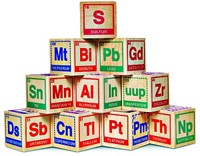Advertisement
Grab your lab coat. Let's get started
Welcome!
Welcome!
Create an account below to get 6 C&EN articles per month, receive newsletters and more - all free.
It seems this is your first time logging in online. Please enter the following information to continue.
As an ACS member you automatically get access to this site. All we need is few more details to create your reading experience.
Not you? Sign in with a different account.
Not you? Sign in with a different account.
ERROR 1
ERROR 1
ERROR 2
ERROR 2
ERROR 2
ERROR 2
ERROR 2
Password and Confirm password must match.
If you have an ACS member number, please enter it here so we can link this account to your membership. (optional)
ERROR 2
ACS values your privacy. By submitting your information, you are gaining access to C&EN and subscribing to our weekly newsletter. We use the information you provide to make your reading experience better, and we will never sell your data to third party members.
Education
Newscripts
Chemistry Kit Chemophobia, Goof-proof Golf Balls
by Marc S. Reisch
February 28, 2011
| A version of this story appeared in
Volume 89, Issue 9

In this glorious age of chemophobia, chalk up another victory for mass hysteria: Now you can buy the CHEMISTRY 60 chemistry set for children featuring “60 fun activities with no chemicals.”
I’m certain many Newscripts readers learned to love chemistry during childhood as they experimented with science kits in tin boxes that contained real chemicals. The Chemical Heritage Foundation, in Philadelphia, has a wonderful collection of those kits. A recent article by Rosie Cook in the group’s spring 2010 Chemical Heritage Magazine mentions a number of such chemistry sets for kids, including Gilbert, Skil Craft, Handy Andy, and the Porter Chemcraft kits.
Like reader Paul Johns of Washington, D.C., who pointed out the “chemical-free” chemical kit to Newscripts, I had a chemistry set growing up, too. It had an alcohol lamp for heating up solutions. Imagine giving that to a nine year old today.
My kit also had many containers, the contents of which I’d mix in the most cavalier fashion to see whether the resulting concoction would smoke, fizz, turn colors, or smell. I must confess that playing with that kit did not turn me into a scientist, but it did give me a healthy respect and admiration for all things chemical.
How does Elenco Electronics, the Chemistry 60 manufacturer, succeed in teaching about topics such as acids, bases, solutions, and colloids without chemicals? It appears that the “chemicals” the kit does not contain are the substances you supply from your kitchen cupboard. The set does include goggles, safety glasses, vials, test tubes, and other lab implements. Of course these plastic tools are chemicals in their own right, but why get technical?
Still, I find it reassuring that, as benign as it appears to be, the Chemistry 60 kit does have an element of danger, just like those kits of yore. The manufacturer cautions parents that the product contains small magnets. “Swallowed magnets can stick together across intestines causing serious infections and death,” Elenco warns. But at least children playing with the Chemistry 60 won’t be able to blow up the family manse. I came close to doing that once or twice, but parental supervision saved the day.
DuPont, the company that gave us “better things for better living … through chemistry,” is still proud to keep doing so. The firm, which dropped the well-known catchphrase in 1982, recently used its chemical know-how to make the GOLFBALL virtually goof-proof when whacked by a professional golfer.
Partnering with ball maker Nike Golf, DuPont didn’t just putter around during development. It produced a lightweight ionomer resin formulation specifically to replace the polybutadiene rubber typically injected into a golf ball’s center.
The new DuPont core is supposed to make the advanced Nike 20XI ball go faster, and Nike’s design enables it to go farther with greater control than previous generations of golf balls.
In case Newscripts readers are wondering, I will not be buying the 20XI. Unable to harness the power of the new ball, I—and amateurs like me—would no doubt clobber other golfers with such a speed demon. The pros will benefit from the mixture of golf balls and good chemistry, but considering my golfing buddies, I will continue to duck anytime someone yells, “Fore!”






Join the conversation
Contact the reporter
Submit a Letter to the Editor for publication
Engage with us on Twitter